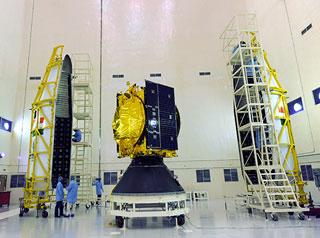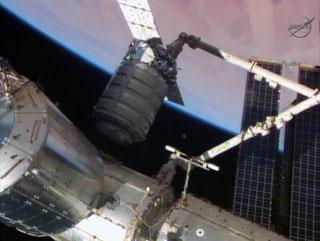
Two halves of GSLV-D5 payload fairing surrounding GSAT-14 satellite. Photo: ISRO.
BANGALORE (PTI): The second orbit raising operation of an advanced Indian communications satellite launched by a rocket using an indigenous powerful booster technology from the space port of Sriharikota was successfully completed by ISRO scientists.
The Indian Space Research Organisation(ISRO) said the Apogee Motor of GSAT-14 was fired for 2,629 seconds with a realised orbit of 32,160 km Perigee, nearest point to earth, by 35,745 km Apogee, farthest point to earth.
The third orbit raising operation is planned on January 9 to place the two-tonne satellite in geostationary orbit, ISRO said in a statement here.
The successful flight test of the indigenous cryogenic upper stage on the satellite has propelled India into the exclusive club of the US, Russia, France, Japan and China, which have mastered the complex cryogenic engine technology.
The satellite was put into orbit by GSLV-D5 after a textbook launch on Sunday from the spaceport in Andhra Pradesh.
India has for years been trying to develop its own cryogenic rocket engines that are designed to put heavier satellites into high geostationary orbits, about 36,000 km from Earth.
The powerful booster technology uses super-cooled liquid fuel--a mix of oxygen and hydrogen in liquid form and kept at a very low temperature.
 Previous Article
Previous Article Next Article
Next Article












The Indian Air Force, in its flight trials evaluation report submitted before the Defence Ministry l..
view articleAn insight into the Medium Multi-Role Combat Aircraft competition...
view articleSky enthusiasts can now spot the International Space Station (ISS) commanded by Indian-American astr..
view article